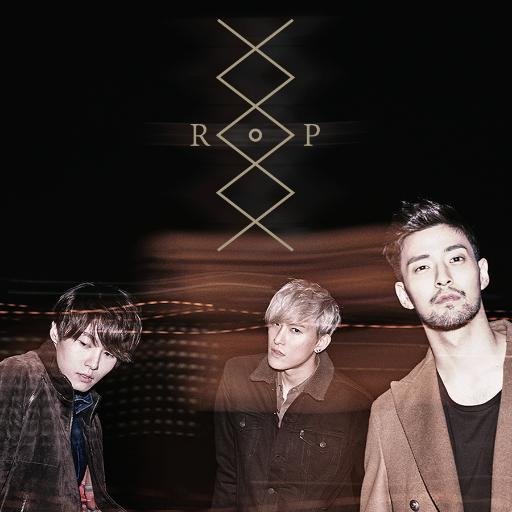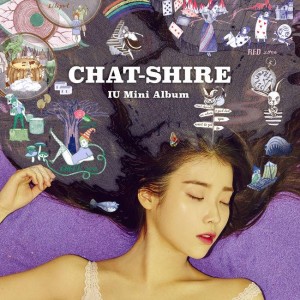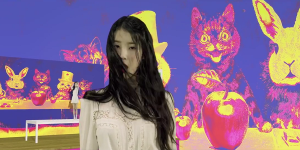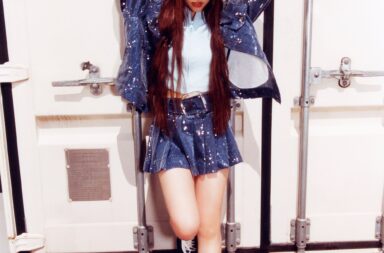 In the K-pop industry, we typically see artists in several categories. In terms of music production, we split them into artists that write their own music and artists that have music written for them. For the artists that write their own music, we think of them as true artists that are free to express themselves in their music. The others are deemed products of the highly regulated K-pop-making machine. However, after thinking about it more, it seems that even the artists that we believe to have creative freedom may actually not possess it in its entirety.
In the K-pop industry, we typically see artists in several categories. In terms of music production, we split them into artists that write their own music and artists that have music written for them. For the artists that write their own music, we think of them as true artists that are free to express themselves in their music. The others are deemed products of the highly regulated K-pop-making machine. However, after thinking about it more, it seems that even the artists that we believe to have creative freedom may actually not possess it in its entirety.
The Royal Pirates is one of the groups that holds this supposed creative freedom. After all, they partake in the production of their own music. However, their MVs seem to propose the idea that there is more behind this creative freedom than meets the eye.
In a recent episode of the After School Club, James talks about the symbolism in the “Run Away” MV and how the scenes represent various struggles the Royal Pirates faced. It appears that the symbolic elements were created based on conscious decisions agreed upon both by the Royal Pirates and by the music video creators. The personal connections to its symbolic elements also suggest that the video is very personal, and subsequently representative of the group and what they wish to express.
Interestingly, among the music videos that introduced them to the K-pop industry was “Drawing the Line,” in which the group were shown to be uncomfortable after being herded around and instructed to act like people they weren’t. This video implied that the Royal Pirates were different from the typical K-pop act because they were able to make fun of the awkwardness K-pop acts are subject to when pretending to be people they are not. It also presented the Royal Pirates as a group that stays true to themselves.
 However, in the previously mentioned After School Club appearance, James comments that their current album was created with a different producer; the album is described as “a little more honest” and containing “more of us in the songs.” EXSY also comments that the scenes of the video portraying him blindfolded and chained represented his inability to do what he wanted, “but [he] was able to release all of [those feelings] into the album.” This renders the “Drawing the Line” video ironic because they were not able to be completely true to their music style. However, this is not to say that the Royal Pirates had no artistic freedom when writing their music previously, but it points to the fact that there may have been less artistic freedom involved in comparison to the creation of their most recent album 3.3.
However, in the previously mentioned After School Club appearance, James comments that their current album was created with a different producer; the album is described as “a little more honest” and containing “more of us in the songs.” EXSY also comments that the scenes of the video portraying him blindfolded and chained represented his inability to do what he wanted, “but [he] was able to release all of [those feelings] into the album.” This renders the “Drawing the Line” video ironic because they were not able to be completely true to their music style. However, this is not to say that the Royal Pirates had no artistic freedom when writing their music previously, but it points to the fact that there may have been less artistic freedom involved in comparison to the creation of their most recent album 3.3.
IU is also known as an artist that has begun writing her own music, and this time, she was even caught in a controversy due to her interpretations of Zeze. IU’s ability to express her own thoughts and feelings in her music are evidence of her increased artistic freedom.
Another controversy she faced was because her MV for “Twenty-Three” was criticized as pedophilic. The song itself, on the other hand, is about her life and strife at the age of twenty-three. With the explanation from the creators of the music video, we are reminded that IU does not create her music videos, and that the “Twenty-Three” MV was created based on the interpretations the music video creators found from her song.
Subsequently, the removal of the video from being the creation of IU herself appears to be a hindrance of IU’s artistic expression. After all, IU is in the video, and the song is hers. These criticisms of the video reflect badly upon her, and she gets pulled into the blame for representing the supposed pedophilia. Of course, we must keep in mind that there are people that specialize in specific aspects of musical production, and it would not be viable for an artist to take the helm on every aspect. At the same time, an artist should have the right to have a say in the creation of the videos that they partake in.
 BTS is another group known to write their own music, and this freedom to write their own music suggests that they have artistic freedom. Interestingly, in their reaction to their MV for “Run,” it appears that they themselves do not completely understand the content of the video. They know the basic premise, but are unfamiliar with the details. It may be argued that they merely want to joke around and be confused with the audience, but that argument doesn’t really make sense because expressing the true meaning of the video poses no visible problems.
BTS is another group known to write their own music, and this freedom to write their own music suggests that they have artistic freedom. Interestingly, in their reaction to their MV for “Run,” it appears that they themselves do not completely understand the content of the video. They know the basic premise, but are unfamiliar with the details. It may be argued that they merely want to joke around and be confused with the audience, but that argument doesn’t really make sense because expressing the true meaning of the video poses no visible problems.
This reminds viewers of the fact that BTS does not create their own music videos. BTS may lose some of their artistic freedom with this loss in control over the videos they partake in. Though the MVs may not be harmful to the group itself, they still provide a platform from which BTS can be judged by. For example, in BTS’s “Boy in Luv” MV, Jin slams a girl against a row of lockers. To viewers, this implies that BTS believes and partakes in manhandling females they are attracted to. The perception of the music video then contributes to the perception of the artist, and if the artist has no control over the music video, their artistic expression is compromised.
 This makes one wonder how much power music videos hold in the eyes of the public. Is the music more important, or the videos? After possessing artistic freedom by way of the music, is the realm of the video something else that must be conquered?
This makes one wonder how much power music videos hold in the eyes of the public. Is the music more important, or the videos? After possessing artistic freedom by way of the music, is the realm of the video something else that must be conquered?
For the “Drawing the Line” music video, it’s interesting that the plot of the video is irrelevant to the lyrical content. The MV is instead used as a vehicle to emphasize Royal Pirates’ supposed artistic freedom, since the video pokes fun at the conundrum of having to pretend to be someone you’re not. Subsequently, the audience perceives Royal Pirates as a group that is not harshly controlled by some musical tyrant.
However, it seems that those that perceived the video in this manner were deceived. In fact, maybe even anyone that believes artists have complete artistic freedom are deceived. After all, with a company backing them, it only makes sense that the company would conduct quality control on the music to ensure that the music can create the largest possible amount of revenue. Conversely, even with this quality control, being able to write their own music still makes it “theirs,” just maybe not completely the way they wanted it to be.

For the music videos of IU and BTS, it does not seem as though their artistic expression is hindered, but being reminded of the fact that they do not create the music videos suggests that there may be potential for misinterpretation or meanings that get lost in translation from the music and lyrics to their visual representations. Subsequently, as consumers, we have to pause and think about the kind of credit allotted to the music video in comparison to that we allot to the music itself.
Going off of this, there are also groups like Tasty that create their own choreography. This is another way of expressing artistic freedom as well. We typically think of artistic freedom in terms of music only, and maybe that is the most important. However, choreography and the image that they put out through the music videos is also important. Thus, until artists are able to partake in every step of the creation of their music (which includes the music itself, the lyrics, the choreography, and the MV), it seems that complete artistic freedom will not exist.
 As for the groups that don’t write their own music, I don’t see how someone can express artistic freedom if they have no control over the music that they sing. Perhaps they can add elements of themselves in the way that they sing the songs to make it “theirs,” but with stories similar to that of JYP making Jo Kwon spend 11 hours recording 2AM‘s debut song “This Song,” it seems that music creators have a concrete idea of what they want their song to sound like, and that idea then dictates the way that the artist sings it. The amount of artistic freedom singers that do not write their own songs wield then depends on the person that writes the song and how flexible they are in terms of how much they allow the singer to change the song to fit their style.
As for the groups that don’t write their own music, I don’t see how someone can express artistic freedom if they have no control over the music that they sing. Perhaps they can add elements of themselves in the way that they sing the songs to make it “theirs,” but with stories similar to that of JYP making Jo Kwon spend 11 hours recording 2AM‘s debut song “This Song,” it seems that music creators have a concrete idea of what they want their song to sound like, and that idea then dictates the way that the artist sings it. The amount of artistic freedom singers that do not write their own songs wield then depends on the person that writes the song and how flexible they are in terms of how much they allow the singer to change the song to fit their style.
The issue of “true” artistic freedom may never be resolved, but it is interesting to consider how, in this consumer society, almost nothing can be attributed to the artist alone. What then becomes of the freedom of artistry? And will it ever be possible for these perpetual shackles on artistic freedom to ever be broken?
(YouTube [1][2][3][4][5][6], Naver, Images via YouTube, LOEN Entertainment, Twitter, Facebook)


